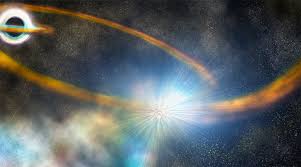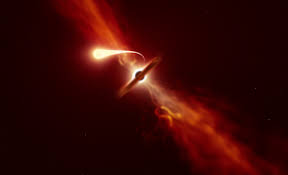Telescopes have captured the rare light flash from a dying star as it was ripped apart by a supermassive black hole.
Written content by Elizabeth Howell
This rarely seen “tidal disruption event” — which creates spaghettification in stars as they stretch and stretch – is the closest such known event to happen, at only 215 million light-years from Earth. (For comparison, the nearest star system to Earth – Alpha Centauri — is roughly 4 light-years away, and the Milky Way is roughly 200,000 light years in diameter.) One light-year is the distance light travels in a year, about 6 trillion miles (10 trillion kilometers).

“The idea of a black hole ‘sucking in’ a nearby star sounds like science fiction. But this is exactly what happens in a tidal disruption event,” the new study’s lead author Matt Nicholl, a lecturer and Royal Astronomical Society research fellow at the University of Birmingham in the United Kingdom, said in a European Southern Observatory statement. Researchers caught the event in action using numerous telescopes, including ESO’s Very Large Telescope and New Technology Telescope.
“When an unlucky star wanders too close to a supermassive black hole in the center of a galaxy, the extreme gravitational pull of the black hole shreds the star into thin streams of material,” co-author Thomas Wevers said in the same statement. Wevers is an ESO Fellow in Santiago, Chile and was at the Institute of Astronomy at the United Kingdom’s University of Cambridge when he did the work.
It has been difficult to see these events in the past because the black hole eating up the star has a tendency to shoot out material from the dying star, such as dust, that obscures the view, ESO officials said. Luckily, the newly studied event was studied shortly after the star ripped to shreds. Read more from Space.com.
Read other science and technology related stories from News Without Politics





